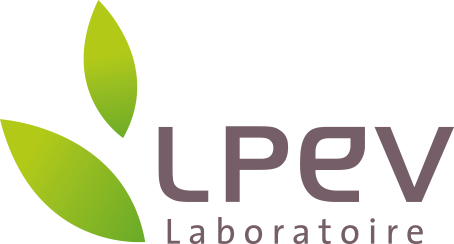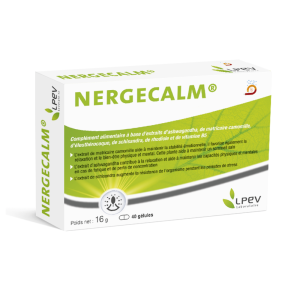1. JEONG JW. et al., Schisandrae Fructus Inhibits IL-1β-Induced Matrix Metalloproteinases and Inflammatory Mediators Production in SW1353 Human Chondrocytes by Suppressing NF-κB and MAPK Activation. DRUG DEVELOPMENT RESEARCH 76 : 474–483 (2015)
2. KIM KY et al., Muscle protective effects of Schisandrae Fructus extracts in old mice after chronic forced exercise, Journal of Ethnopharmacology, Volume 212, 15 February 2018, P :175-187
3. SUN W. et al, Effects of Schisandra polysaccharides on the learning and memory ability in brain aging mice. Applied Mechanics and Materials. Vols. 675-677 (2014) pp 1595-1599
4. LAM PY et al. Schisandrin B protects against solar irradiation induced oxidative stress in rat skin tissue. Filoterapia, 2011, 82, 93-400
5. CHIU PY et al., Schisandrin B protects against solar irradiation induced oxidative injury in BJ human fibroblasts. Fitoterapia. 2011 Jun;82(4):682-91.
6. JO SH et al., In vitro and in vivo anti-hyperglycemic effects of Omija (Schizandra chinensis) fruit., Int J Mol Sci. 2011 Feb 23;12(2):1359-70.
7. TING ZHAO et al., Anti-diabetic effects of polysaccharides from ethanol-insoluble residue of Schisandra chinensis (Turcz.) Baill on alloxan-induced diabetic mice, Chemical Research in Chinese
Universities, February 2013, Volume 29, Issue 1, pp 99–102
8. HYOUNG JOONPARK et al., Anti-obesity effect of Schisandra chinensis in 3T3-L1 cells and high fat diet-induced obese rats, Food Chemistry, Volume 134, Issue 1, 1 September 2012, Pages 227-234
9. YUAN R. et al., Protective effect of acidic polysaccharide from Schisandra chinensis on acute ethanol-induced liver injury through reducing CYP2E1-dependent oxidative stress. Bio medecine and Pharmacotherapy research. 2018 Mar;99:537-542.
10. KWAN HY et al., Lipidomic based investigation into the regulatory effect of Schisandrin B on
palmitic acid level in non-alcoholic steatotic livers. Scientific Reports. 2015 Mar 13;5:9114.
11. JANG MK et al., Schisandra chinensis extract ameliorates nonalcoholic fatty liver via inhibition of endoplasmic reticulum stress. Journal of Ethnopharmacology. 2016 Jun 5;185:96-104.
12. LU H, LIU GT. Antioxidant activity of dibenzo cyclooctene lignans isolated from Schisandraceae. Planta Medica. 1992 Aug;58(4):311-3.
13. GAN LUO et al. 2018 - Schisandra Chinensis Lignans Suppresses the Production of Inflammatory Mediators Regulated by NF-κB, AP-1, and IRF3 in Lipopolysaccharide-Stimulated RAW264.7 Cells. Molecules. 2018 Dec 14;23(12).
14. ZHOU F. et al. , Schizandrin A protects against cerebral ischemiareperfusion injury by suppressing inflammation and oxidative stress and regulating the AMPK/Nrf2 pathway regulation. Am J Transl Res. 2019 Jan 15;11(1):199-209.
15. ZHAO X. et al., Total Lignans of Schisandra chinensis Ameliorates Aβ1-42-Induced Neurodegeneration with Cognitive Impairment in Mice and Primary Mouse Neuronal Cells. PLOS One. 2016 Apr 1;11(4)
16. HU D. et al. Deoxyschizandrin Isolated from the Fruits of Schisandra chinensis Ameliorates Aβ1-42-induced Memory Impairment in Mice.Planta Med. 2012 Jul 6.
17. YAN T. et al., Schisandra chinensis produces the antidepressant-like effects in repeated corticosterone-induced mice via the BDNF/TrkB/CREB signaling pathway.Psychiatry Research. 2016 Sep 30;243:135-42
18. JIANG, T.et al. Anti-Anxiety Effect of Schisandra chinensis Baill Lignans on Mice in Elevated Plus Maze Test. Applied Mechanics and Materials, 2014- Vols. 675-677 (2014) pp 1580-158
19. ZHU H. et al. Sedative and hypnotic effects of supercritical carbon dioxide fluid extraction from Schisandrachinensis in mice. J Food Drug Anal. 2016 Oct;24(4):831-838.
20. PANOSSIAN A. ET WIKMAN G. Pharmacology of Schisandra chinensis Bail. : an overview of Russian research and uses in medicine. Journal of Ethnopharmacology. 2008 Jul 23;118(2):183-212.
21. AHUMADA F. et al., Studies on the effect of Schizandra chinensis extract on horses submitted to exercise and maximum effort. Phytotherapy Research 3(5):175 - 179 • January 1989
22. HANCKE J.L. et al, Reduction of serum hepatic transaminases and CPK in sport horses with poor performance treated with a standardized Schizandra chinensis fruit extract. Phytomedicine 3(3):237- 40 • November 1996
23. CHI A. et al. Metabolic mechanism of a polysaccharide from Schisandra chinensis to relieve chronic fatigue syndrome. International Journal of Biological Macromolecules. 2016 Dec;93(Pt A):322-332.
24. Bai X. et al., The ability of Schisandra chinensis fruit to inhibit the growth of foodborne pathogenic bacteria and the viability and heat resistance of Bacillus cereus spores, Food science Technology, Volume50, Issue10, October 2015, P. 2193- 2200
25. HOU Z. et al., Pharmacological Research of Schisandra Chinensis (Turcz.) Baill., International Conference on Manufacturing Science and Engineering (ICMSE 2015), p116-119
26. LIN RD et al., the immunoregulatory effects of Schisandra chinensis and its constituents on human monocytic leukemia cells. Molecules. 2011 Jun 10 ; 16(6): 4836-49
27. ZHAO LM et al., Prevention effects of Schisandra polysaccharide on radiation-induced immune system dysfunction. Int J Biol Macromol. 2015 May;76:63-9.
28. QU HM et al. Antitumor and antiangiogenic activity of Schisandra chinensis polysaccharide in a renal cell carcinoma model. Int J Biol Macromol. 2014 May; 66:52-6
29. PARK JY, KIM KH. A randomized, double-blind, placebo controlled trial of Schisandra chinensis for menopausal symptoms. Climacteric. 2016 Dec;19(6):574-580. WHO monographs on selected medicinal plants Volume 3- 2007- p296-313
30. PARK JY, KIM KH. A randomized, double-blind, placebo controlled trial of Schisandra chinensis for menopausal symptoms. Climacteric. 2016 Dec;19(6):574-580.
31. WHO monographs on selected medicinal plants Volume 3- 2007- p296-313





